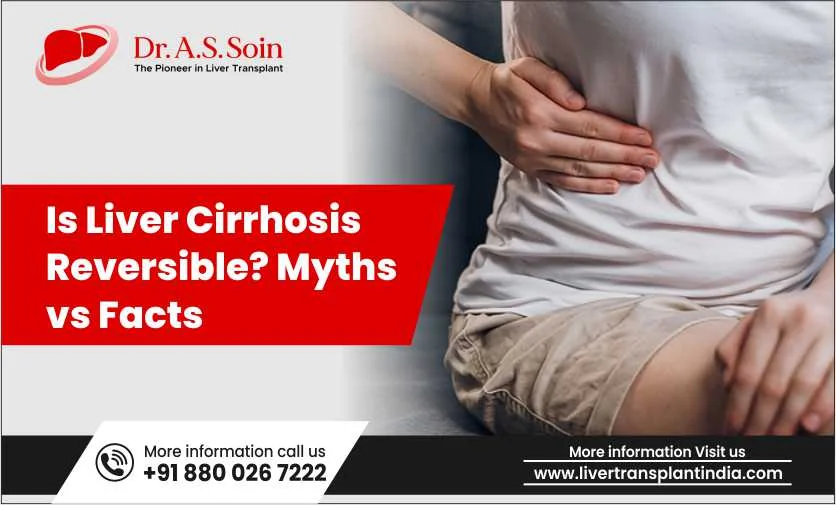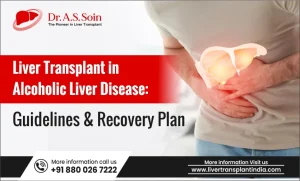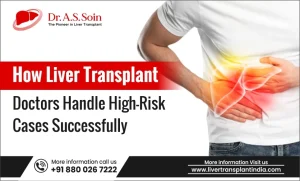Liver cirrhosis, a condition where healthy liver tissue is progressively replaced by scar tissue (fibrosis), is traditionally viewed as a permanent and irreversible stage of liver damage. However, recent advances in liver science and clinical therapies have refined this perspective significantly. While advanced, decompensated cirrhosis remains largely irreversible, early-stage cirrhosis—especially compensated cirrhosis—can be partially reversible with appropriate treatment and lifestyle changes.
Table of Contents
ToggleUnderstanding Liver Cirrhosis and Its Stages
Cirrhosis results from chronic liver injuries due to causes such as hepatitis B and C, alcohol-associated liver disease, non-alcoholic fatty liver disease (NAFLD/NASH), autoimmune hepatitis, genetic disorders, and biliary diseases. The disease progresses along a spectrum:
- F0–F3: No to severe fibrosis without cirrhosis
- F4: Cirrhosis, which is further classified into compensated (preserved liver function) and decompensated (with complications like ascites, jaundice, encephalopathy) stages
The earlier the intervention, the greater the potential to halt or reverse liver damage.
Current Evidence on Reversibility
Modern treatments and research have demonstrated that cirrhosis reversal is biologically plausible and achievable in specific contexts:
- Antiviral therapies, especially for hepatitis B and C, have shown fibrosis regression and reduced complications, with some patients achieving significant improvement in liver structure and function over years of treatment.
- Metabolic therapies for NAFLD/NASH, such as weight loss, insulin sensitivity improvement, and newer drugs like GLP-1 receptor agonists and pioglitazone, can reduce fibrosis and improve liver health.
- Alcoholic liver disease patients achieving sustained abstinence (2+ years) often exhibit histological improvements and functional recovery.
- New pharmacologic advances: At the 2025 EASL Congress, breakthrough data on efruxifermin showed reversal of cirrhosis due to metabolic-associated steatohepatitis (MASH), offering hope of effective therapies for compensated cirrhosis beyond lifestyle changes.
- Integrative therapies: Combining traditional Chinese medicine with antiviral drugs has demonstrated significant fibrosis regression and cirrhosis reversal rates in hepatitis B-related liver disease.
Despite these advances, full reversal is uncommon in advanced or decompensated cirrhosis, where extensive architectural distortion and portal hypertension limit recovery. Here, treatments focus on slowing progression and managing complications, with liver transplantation as a definitive option for eligible patients.
Addressing Common Myths with Updated Facts
- Myth: Cirrhosis is always irreversible.
Fact: Early/stable cirrhosis may regress with effective treatment; decompensated cirrhosis rarely reverses fully. - Myth: Symptom control means disease is cured.
Fact: Symptomatic relief does not indicate reversal; underlying liver damage often persists unless causes are treated. - Myth: Normal liver function tests (LFTs) equal cured cirrhosis.
Fact: LFTs may be normal in compensated cirrhosis; advanced imaging and biopsy better assess fibrosis. - Myth: Liver transplant is the only cure.
Fact: Many patients live long with compensated cirrhosis managed through lifestyle and therapies; transplantation is reserved for advanced cases. - Myth: Cirrhosis reversal eliminates cancer risk.
Fact: Hepatocellular carcinoma risk remains elevated; lifelong surveillance is necessary. - Myth: All cirrhosis progresses at the same rate.
Fact: Progression varies widely based on factors like ongoing injury and genetics. - Myth: Quitting alcohol automatically heals the liver.
Fact: Abstinence is vital but recovery depends on disease stage and overall health. - Myth: Cirrhosis means inevitable organ failure.
Fact: Many maintain good liver function for years, especially with compensated cirrhosis. - Myth: Treating the root cause is pointless once cirrhosis is present.
Fact: Treating underlying causes remains essential even in late stages to slow progression and reduce risks. - Myth: No need for follow-up after reversal.
Fact: Lifelong monitoring is crucial due to persistent risks.
https://www.roundtowers.org.uk/
The Liver’s Ability to Heal
Hepatic stellate cells responsible for fibrosis can deactivate once injury stops; the liver’s regenerative capacity, combined with the breakdown of scar tissue by enzymes, supports possible reversal, especially in early disease.
Emerging Treatments and Future Prospects
New drugs like efruxifermin, stem cell therapies, and gene therapies under investigation are showing promise in reversing fibrosis and improving liver function. Efruxifermin has notably demonstrated cirrhosis reversal in metabolic-associated liver disease during clinical trials, marking a significant advance as of 2025.
Limitations and Importance of Prevention
Despite progress, advanced cirrhosis with portal hypertension and architectural distortion remains difficult to reverse. Preventing progression through early diagnosis, vaccinations, antiviral treatments, alcohol cessation, metabolic control, and regular monitoring remains foundational.
Conclusion
Liver cirrhosis is no longer seen as an absolute point of no return. Early detection and targeted treatments can halt or partially reverse damage in many cases, offering improved outcomes and quality of life. However, advanced cirrhosis still poses significant challenges, making prevention and lifelong surveillance essential for all patients.
This updated understanding provides hope but also underscores the need for informed, proactive care and realistic expectations in managing cirrhosis today.








